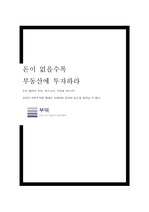목차
Ⅰ. 자기1. 심리학의 ‘자기’ 개념
2. ‘자기’의 발달
3. ‘자기’에 관한 지식의 출처
4. ‘자기’에 대한 심리학적 접근
Ⅱ. 공격성
1. 공격성의 개념
2. 공격성의 설명
3. 성격특질로서의 공격성
4. 반사회적 행동의 두 유형
5. 공격행동과 비공격 행동을 매개하는 정서: 분노 대 슬픔
6. 공격성과 관련된 주요 논제들
Ⅲ. 사랑
1. 성
2. 애착
3. 사랑
Ⅳ. 참고문헌
본문내용
1) 심리학과 ‘자기’개념의 중요성(1) 심리학에서 ‘자기’의 중요성(Pervin, 1996)
① ‘자기’는 사람들의 경험세계의 주된 부분
② ‘자기’는 세상을 해석하는 양식을 반영
③ ‘자기’는 다양한 기능들에 통일성을 부여
2) ‘자기’개념의 역사
James(1890)는 ‘자기’를 의식적이며 정서적인 체험의 대상으로 간주
Mead(1934)는 ‘자기’의 반성적이며 사회적인 측면에 초점
Jung과 Allport는 인본주의적 ‘자기’개념을 소개하여 Rogers와 Maslow등에게 영향
Rogers와 Maslow등이 이끈 인본주의 심리학이 등장한 1950-60년대에 ‘자기’개념이 급부상
- ‘자기’의 수용과 실현의 중요성을 강조
인지심리학에서는 ‘자기’가 정보처리에 미치는 영향을 강조
3) ‘자기’개념의 선구들
(1) James의 정서적으로 체험되는 ‘자기’의 개념
William James의 ‘자기’정의
- 자신의 것으로 부를 수 있는 모든 것의 총합”
- 물질적 자기(material self), 사회적 자기(social self),
정신적 자기(spiritual self), 순수 자아(pure ego)
(2) G. H. Mead의 사회적으로 구성되는 ‘자기’의 개념
Cooley, Baldwin, G. H. Mead 등 상징적 상호작용주의(symbolic interactionism)학파에서
‘자기’ 개념 발전에 큰 공헌
- Cooley(1902) : 거울 속의 자기(looking-glass self)
- G. H. Mead(1934) : ‘자기’의 반성적인(reflexive) 측면과 사회적 기원에 주목
(3) Jung과 Allport의 성숙한 ‘자기’의 개념
분석심리학의 창시자 Jung과 특질이론을 제안한 Allport의 공통점: 성격의 해부보다 인성의 의미를 추구했다
Jung : ‘자기’는 원형 중의 하나이되, 대단히 중요한 원형 ‘자기’의 발달은 인간의 삶의 궁극적 목표
참고 자료
민경환 (2002). 성격심리학, 서울: 법문사.Ainsworth, M. D. S. (1979). Attachment as related to mother-infant interaction.In J. S. Rosenblatt, R. A. Hinde, C. Beer, & M. Busnel(Eds.), Advances in the study of behavior(Vol. 9). New York: Academic Press.
Bandura, A. (1973). Aggression: A social learning analysis. Englewood Cliffs, NJ: Prentice-Hall.
Bandura, A. (1977). Social learning theory. Englewood Cliffs, NJ: Prentice-Hall.
Bandura, A., & Cervone, D. (1983). Self-evaluative and self-efficacy mechanisms governing the motivational effect of goal systems. Journal of Personality and Social Psychology, 45, 1017-1028.
Bartholomew, K., & Horowitz, L. M. (1991). Attachment styles among young adults: A test of a four-category model. Journal of Personality and Social Psychology, 61, 226-244.
Berkowitz, L. (1974). Some determinants of impulsive aggression: Role of mediated associations with reinforcements for aggression. Psychological Review, 81, 165-176.
Berkowits, L. (1998). Aggressive personalities. In D. F. Barone, M. Hersen, & V. B. Van Hasselt(Eds.), Advanced personality. New York: Plenum.
Bowlby, J. (1969). Attachment and loss: Vol. 1. Attachment. New York: Basic Books.
Buss, A. H. (1961). The psychology of aggression. New York: Wiley.
Buss, D. M., & Schmitt, D. P. (1993). Sexual strategies theory: An evolutionary perspective on human mating. Psychological Review, 100(2), 204-232.
Cairns, R. B. (1979). Social development. San Francisco: Freeman.
Carver, C. S., Scheier, M. F., & Weintraub, J. K. (1989). Assessing coping strategies: A theoretically based approach. Journal of Personality and Social Psychology, 56, 267-283.
Cooley, C. H. (1902). Human nature and the social order. New York: Scribner’s.
Damon, W., & Hart, D. (1988). Self-understanding in childhood and adolescence. Cambridge, England: Cambridge University Press.
Dodge, K. A. (1982). Social information-processing variables in the development of aggression and altruism and aggression: Social and sociobiological origins (pp. 280-302). New York: Cambridge University Press.
Dollard, J., Doob, L., Miller, N. E., Mowrer, O. H., & Sears, R. R. (1939). Frustration and aggression. New Haven, CT: Yale University Press.
Epstein, S. (1990). Cognitive-experiential self theory. In L. A. Pervin(Ed.). Handbook of personality: Theory and research(pp. 165-192). New York: Guilford.
Eron, L. D. (1987). The development of aggressive behavior from the perspective of a developing behaviorism. American Psychologist, 42, 197-211.
Farrington, D. P. (1989). Early predictors of adolescent aggression and adult violence. Violence and Victims, 4, 79-100.
Feshbach, S. (1970). Agression. In P. H. Mussen(Ed.), Carmichael’s manual of child psychology. New York: Wiley.
Freud, S. (1933). New introductory lectures on psychoanalysis(W. J. H. Sproutt, Trans.), New York: Norton.
Hampson, S. E. (1988). The construction of personality(2nd ed.). London:Toutledge.
Hazan, C., & Shaver, P. R. (1987). Romantic love conceptualized as an attachment process. Journal of Personality and Social Psychology, 52, 511-524.
Hazan, C., & Shaver, P. R. (1994). Attachment as an organizational framework for research on close relationships. Psychological Inquiry, 5, 1-22.
Higgins, E. T. (1987). Self-discrepancy: A theory relating self and affect. Psychological Review, 94, 319-340.
James, W. (1890). The principles of psychology(vols. 1 and 2). New York: Holt.
Kagan, J. (1984). The nature of the child. New York: Basic Books.
Kagan, J. (1989). Unstable ideas: Temperament, cognition, and self. Cambridge, MA: Cambridge University Press.
Lewis, M. (1990). Self-knowledge and social development in early life. In L. A. Pervin(Ed.), Handbook of personality(pp. 277-300). New York: Guilford Press.
Lorenz, K. Z. (1966). On aggression. New York: Harcourt.
Maccoby, E. E., & Jacklin, C. N. (1974). The psychology of sex differences. Stanford: Stanford University Press.
Markus, H. (1977). Self-schemata and processing information about the self. Journal of Personality and Social Psychology, 35, 63-78.
Mead, G. H. (1934). Mind, self, and society. Chicago: University of Chicago Press.
Mischel, W. (1993). Introduction to Personality. Orlando, FL: Harcourt Brace Jovanovich College Publishers.
Olweus, D. (1979). Stability of aggressive reaction patterns in males: A review. Psychological Review, 86, 852-875.
Patterson, G. R. (1976). The aggressive child: Victim and architect of a coercive system. In L. A. Hamerlynck, L. C., Handy, & E. J. Mash(Eds.), Behavior modification and families, vol. 1, Theory and research. New York: Brunner/Mazel.
Pervin, L. A. (1996). The science of personality. New York: Wiley.
Piaget, J. (1973). The affective unconscious and the cognitive unconscious. Journal of the American Psychoanalytic Association, 21, 249-261.
Rule, B. G., & Nasdale, A. R. (1976). Emotional arousal and aggressive behavior. Psychological Bulletin, 83, 851-863.
Shweder, R. A. (1982). Beyond self-constructed knowledge: The study of culture and morality. Merrill-Palmer Quarterly, 28, 41-69.
Snyder, M. (1974). Self-monitoring of expressive behavior. Journal of Personality and Social Psychology, 30, 526-537.
Trivers, R. (1972). Parental investment and sexual selection. In B. Campbell(Ed.), Sexual selection and the descent of man (pp. 136-179). Chicago : Aldine-Atherton.



























